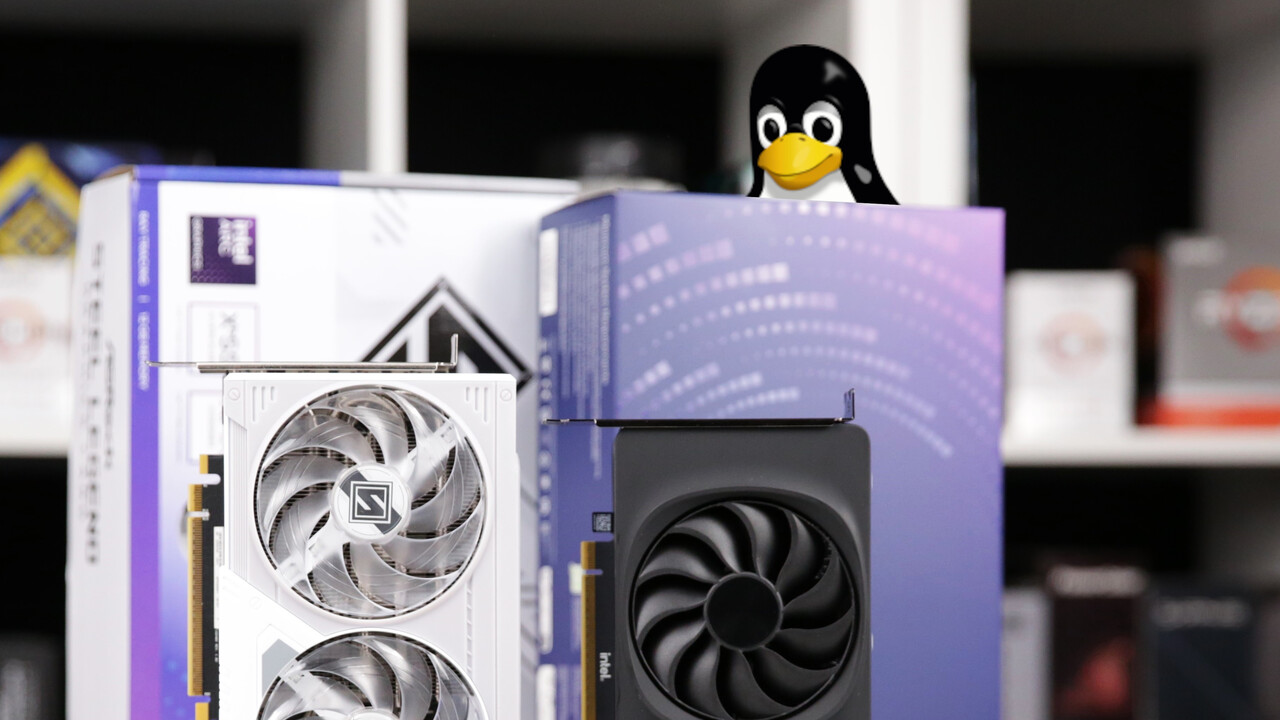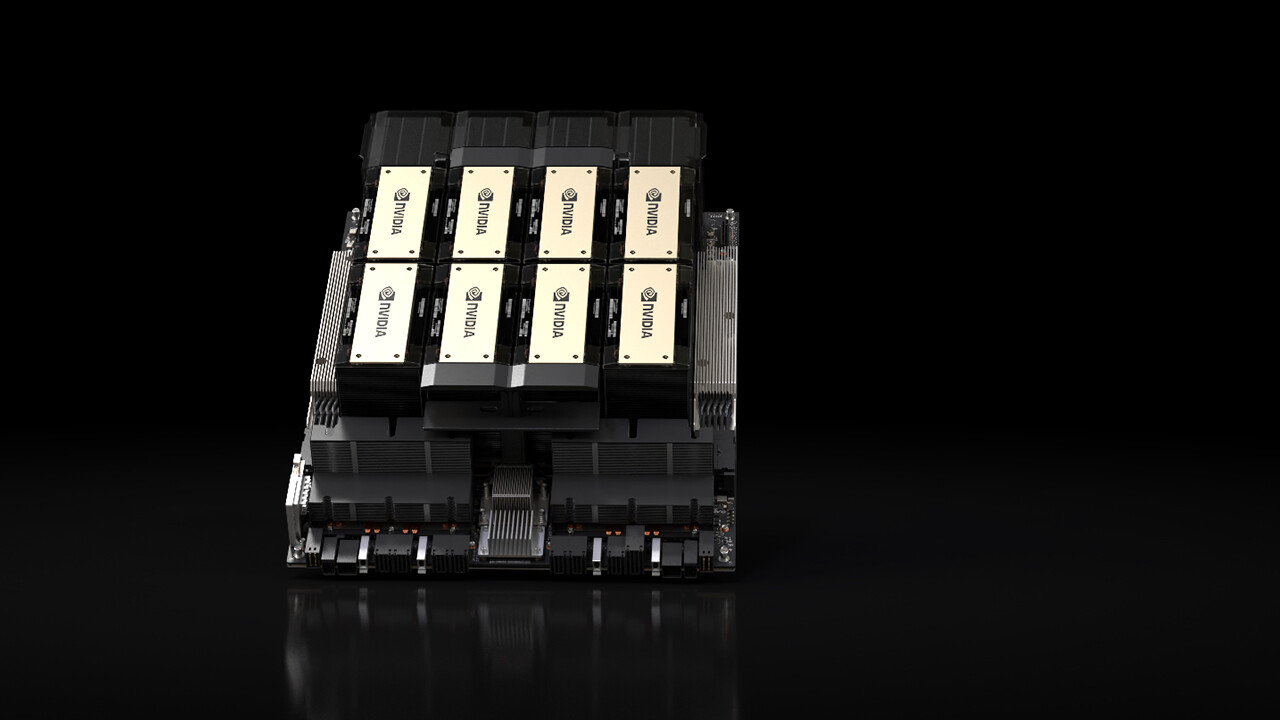Graphics card sales: Nvidia’s market share has never been higher than today 246 comments
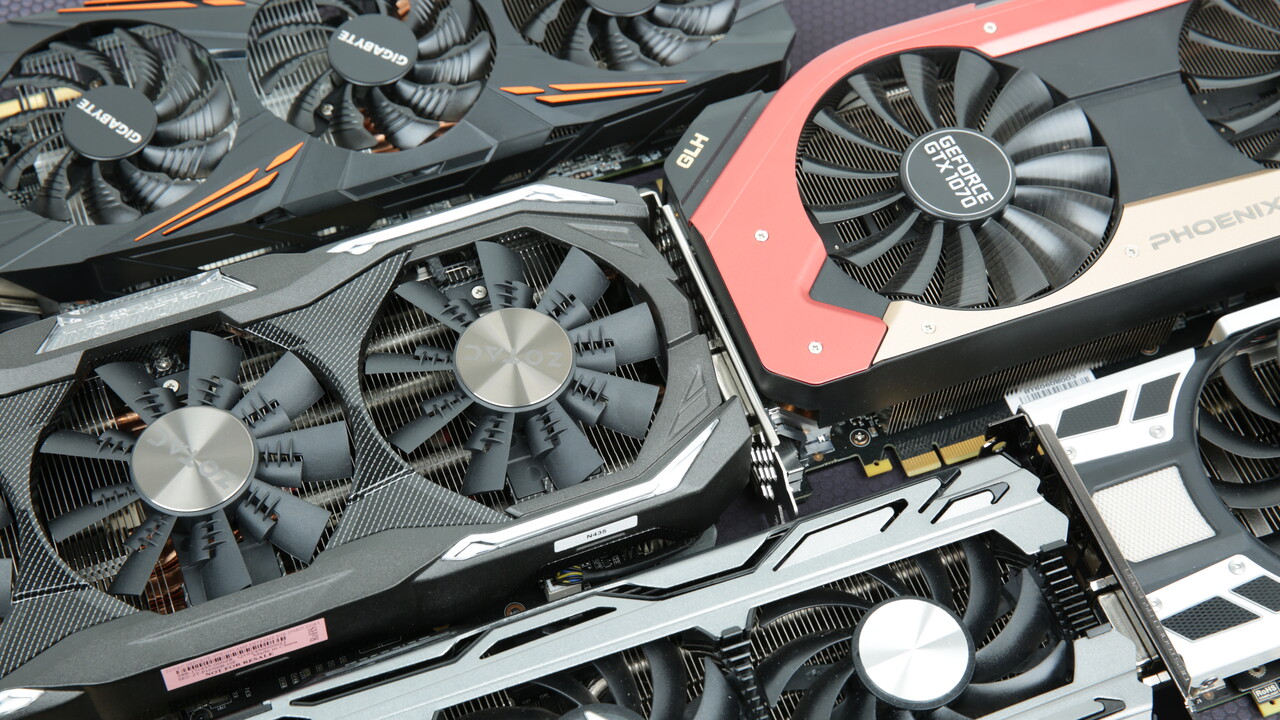
Another quarter has passed and a new study on global desktop graphics card sales is available. According to Jon Peddie Research (JPR), Nvidia has further strengthened its leadership position and now holds 90% market share with GeForce, ahead of AMD Radeon. Intel still plays almost no role.
Nvidia is now at 90 percent
While Nvidia previously had 88% of expansion card (AIB) sales, as JPR calls graphics solutions dedicated to the PC sector, in the third quarter of 2024 it was another 2 percentage points higher. This means that around 90 percent of market share charts come from California-based graphics card manufacturer GeForce. Nvidia’s share has never been higher than today.
 Graphics card market share (AIB) over time (Image: 3D Center)
Graphics card market share (AIB) over time (Image: 3D Center)
AMD Radeon remains the second force with around 10 percent, but has lost around 2 percentage points compared to its main competitor. Intel isn’t quite at 0, but its share is so small that when rounded up, it leaves only “0%” market share for Arc family graphics cards.
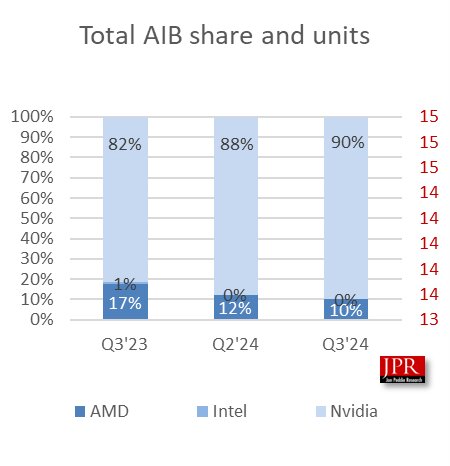 Graphics card market share (AIB), Nvidia now at 90% (Image: Jon Peddie Research)
Graphics card market share (AIB), Nvidia now at 90% (Image: Jon Peddie Research)
Radeon news versus high GeForce prices?
What makes Nvidia happy is a problem for the competition. Without strong competition, GeForce graphics card prices remain high. An even higher price level is expected for the next generation Blackwell, aka GeForce RTX 5xxx.
But there is hope for new alternatives, at least in the middle class, which will likely be a larger segment in terms of unit sales. AMD could present the Radeon RX 8xxx with the new RDNA 4 architecture at the beginning of January. These should catch up with Nvidia GeForce, particularly in terms of ray tracing performance. However, they will likely only be able to compete with Nvidia’s RTX 4xxx generation. Nvidia’s Blackwell models, which will also launch next year, could once again be far ahead in terms of performance.
Bad times for the graphics card market
The third quarter of 2024 was not exactly rosy for the entire AIB market. Market researchers found that a total of 8.1 million AIBs were sold, a decrease of 7.9 percent compared to the same period last year. Compared to the second quarter, sales actually fell 14.5 percent, although the third quarter is generally stronger than the previous one.
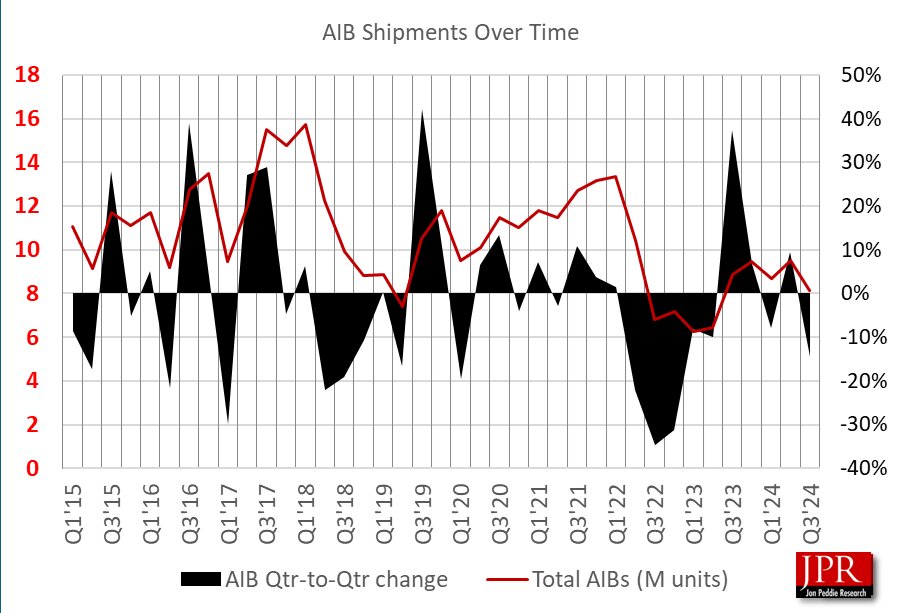 Graphics card sales (AIB) over time (Image: Jon Peddie Research)
Graphics card sales (AIB) over time (Image: Jon Peddie Research)
No improvement is expected for the future. JPR fears that high tariffs could lead to a continued rise in final consumer prices, which would have a corresponding impact on the willingness to purchase.
“We believe that the tariffs and the lack of corresponding wage increases over the next two years will push the U.S. economy into recession, and that other countries will feel the consequences as consumers reduce their expenses,” said Dr. Jon Peddie, director of the institute.
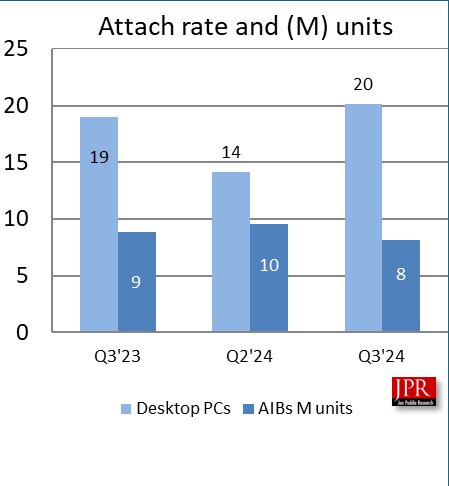 Desktop and graphics card sales comparison (Image: Jon Peddie Research) Topics: AMD Arc GeForce Intel Nvidia Radeon Economy graphics cards Source: Jon Peddie Research
Desktop and graphics card sales comparison (Image: Jon Peddie Research) Topics: AMD Arc GeForce Intel Nvidia Radeon Economy graphics cards Source: Jon Peddie Research

An engineer by training, Alexandre shares his knowledge on GPU performance for gaming and creation.
